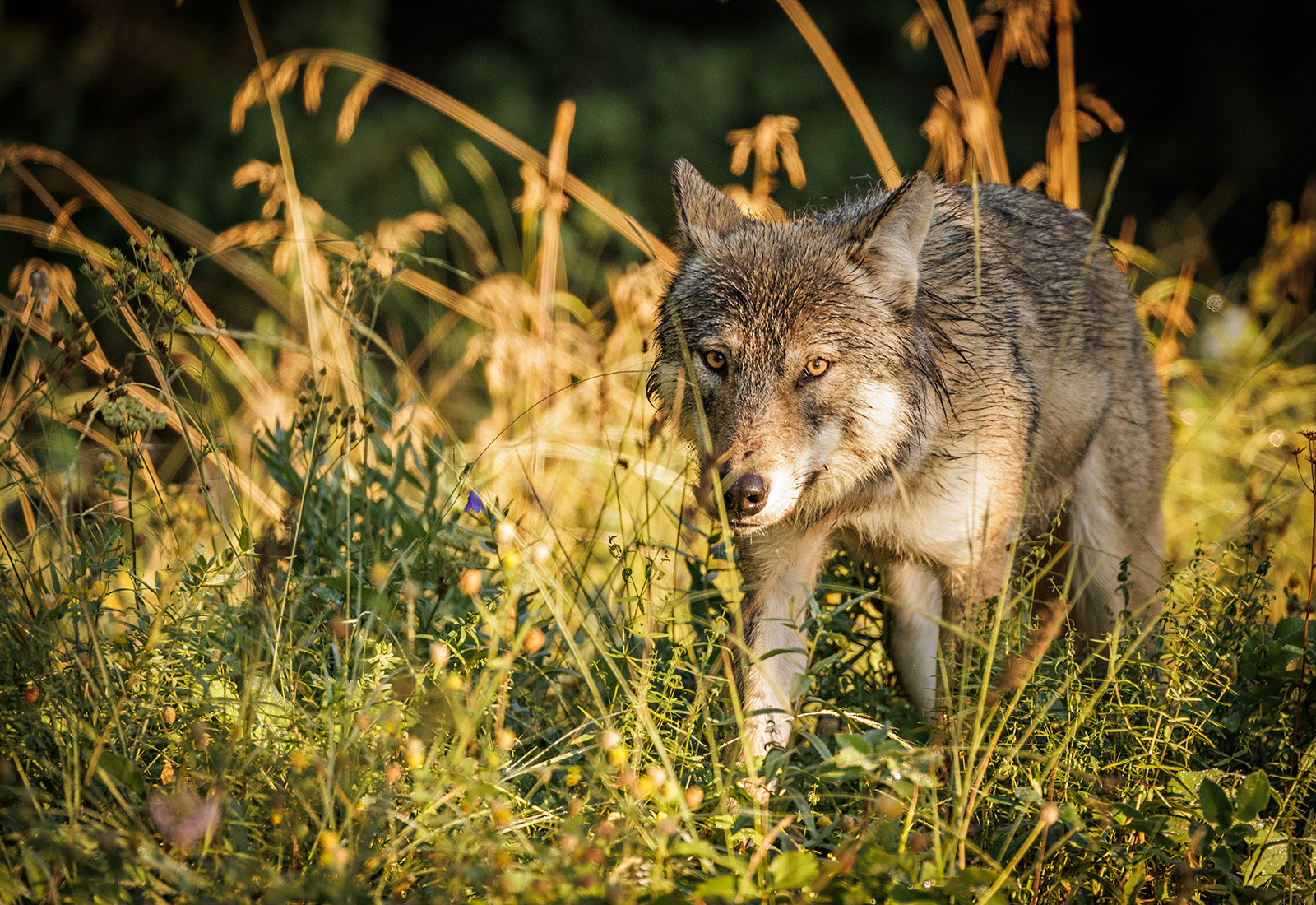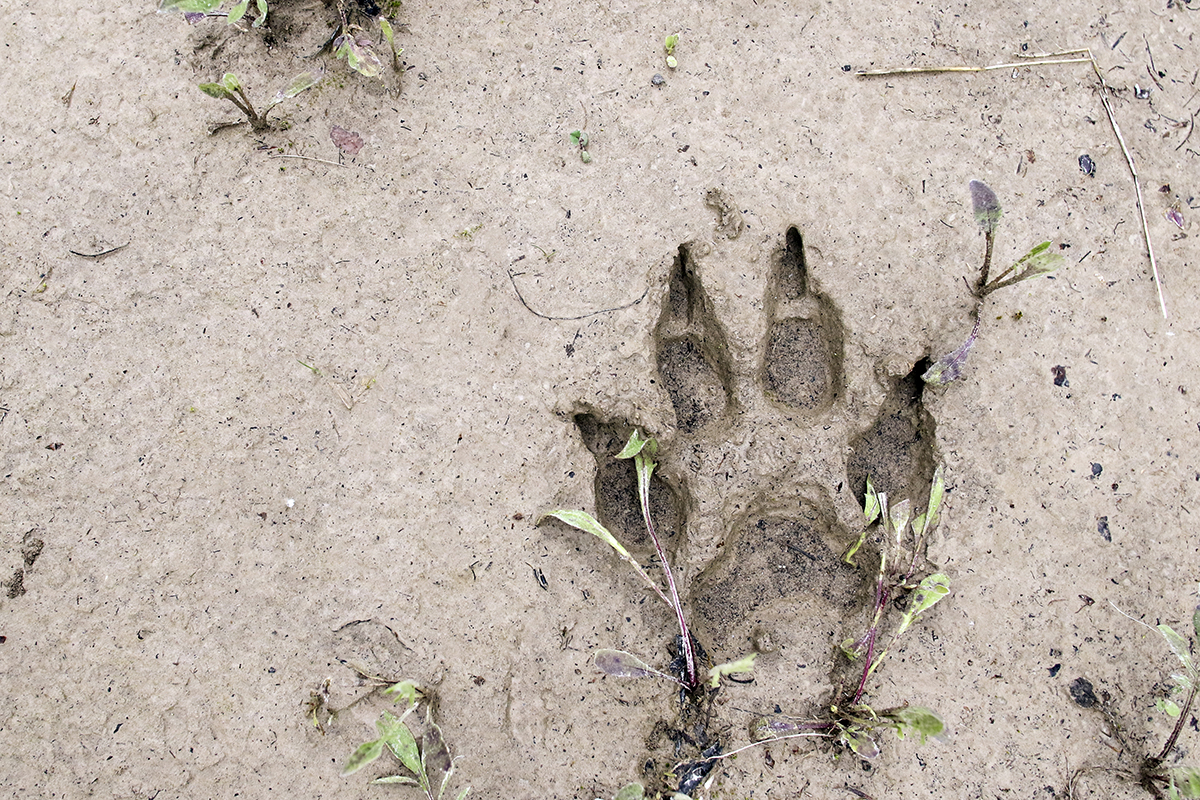Montana Wolf Population Strong Despite Increased Harvest Limits
The latest report by Montana Fish, Wildlife and Parks estimates that 1,096 wolves inhabit the state, with around 500 in Region 1 encompassing Flathead County
By Micah Drew
The wolf population in Montana remains steady despite increased harvest during the 2023 hunting and trapping season, according to a July 31 report by Montana Fish, Wildlife and Parks (FWP).
The statewide wolf population in 2023 was estimated at 1,096 animals, just one fewer than the 2022 population estimates and slightly lower than the 10-year average of 1,140 wolves. However, biologists with FWP say they expect to see a moderate decline in wolf numbers beginning next year following further increases in harvest limits under consideration.
“We are committed to following the law to reduce wolf numbers to a sustainable level, which means ensuring Montana has a healthy state managed population,” FWP Chief of Conservation Policy Quentin Kujala said in a press release. “The statewide wolf population estimate for calendar year 2023 is approximately 1,100 wolves, similar to 2022. However, we are seeing declines in the estimated number of wolves and wolf packs in Regions 3 and 4, which suggests the combination of hunting, trapping, and conflict management removals can effectively reduce wolf numbers.”
During the 2023-24 wolf season, which ended on March 15, the harvest totaled 286 wolves, including 161 taken by hunters and 125 taken by trappers. The harvest was slightly higher than the previous two seasons despite the spring trapping season being shortened following a federal court ruling. Harvest numbers follow population density with 121 wolves taken from Region 1; 86 from Region 2; 53 from Region 3; and 15 from Region 4.
In 2021, the Montana Legislature passed a bill requiring FWP to reduce the number of wolves to a “sustainable level,” with a stated goal of preventing a decline in the state’s deer and elk populations and minimizing livestock predation. Last fall the agency released a draft of their new Gray Wolf Conservation and Management Plan, the first update in 20 years, to guide future wolf management policy and incorporate the changes in statute.
“The plan is guiding us in a management direction to get to a sweet spot where we have low numbers of conflict, deer and elk numbers rebounding and flexibility to deal with isolated conflict incidents when they occur,” Greg Lemon, FWP’s communicator and education division administrator, told the Beacon.
According to FWP data, Montana’s wolf population peaked in 2011 with an estimated 1,263 individual animals among 189 packs. In the 12 years since, there has been a slight decline in the number of packs in the state — 181 in the 2023 report — occupying roughly 66,000 acres, mostly concentrated in the western portion of Montana.
In FWP’s Region 1, which comprises Flathead, Lincoln, Sanders and Lake counties, there are approximately 81 wolf packs with 500 total individuals, the highest concentration in the state.

“What we’ve been seeing in [population models] and in the field in our region is the wolf population has been steady for a while. We do think we’re sustaining them at a good ecological level,” said Wendy Cole, FWP’s wolf management specialist for Region 1. “In an area like Region 1, where we have a very solid population of ungulates, it’s a high quality wolf territory.”
Despite the high number of animals, the rugged terrain found across northwest Montana makes hunting for wolves more difficult than in other regions. For the same reasons, it’s more difficult to trap wolves for research purposes and makes seeing one of the local packs a rarity for many people.

“Wolves have a really high level of natural fear and suspicion of humans, which is justified because we have a harvest season,” Cole said. “They’re not as scent- and food-focused as bears so they’re not as likely to come close to attractants in populated areas, and in Region 1 we have few livestock producers so there’s significantly less conflicts in this region.”
According to the FWP report, the number of livestock depredation complaints due to wolves reached the lowest number since 2001. The U.S. Department of Agriculture’s (USDA) Wildlife Services division confirmed that in 2023, wolves killed 23 cattle, eight sheep and one livestock guardian dog statewide, with an additional eight animals considered probable wolf kills.
The number of cattle killed by wolves was a nearly two-decade low and the 31 wolves killed due to livestock control actions was the lowest in 18 years, according to the USDA’s Wildlife Services.
The Montana Livestock Loss Board reimburses livestock producers for losses from predation and, in 2023, paid out $42,842 to 17 livestock owners for wolf activity. Reimbursements from wolf predation was significantly lower than from grizzly bears, at $157,281, and roughly twice that due to mountain lion activity.
“Moving forward with proposed wolf regulations, we will continue to provide the Fish and Wildlife Commission with our best science and lessons learned from Montana wolf management to date,” Kujala said.
During the 2023 calendar year, Montana sold 15,091 resident wolf hunting licenses and 2,539 non-resident licenses. Sales of these licenses generated $283,957 for wolf management and monitoring in the state, the lowest revenue in more than a decade.
At the Aug. 16 Fish and Wildlife Commission meeting, FWP will propose wolf and furbearer regulations for the 2024/2025 seasons. The proposed total wolf harvest quota is 334 wolves, up from 313 for the 2023 season, and includes 131 wolves from Region 1.
The Montana Fish and Wildlife Commission will review and make a final decision on the proposed furbearer and wolf trapping and hunting seasons at its Aug. 16 meeting. The commission will set wolf trapping dates and determine where they apply at its October meeting.